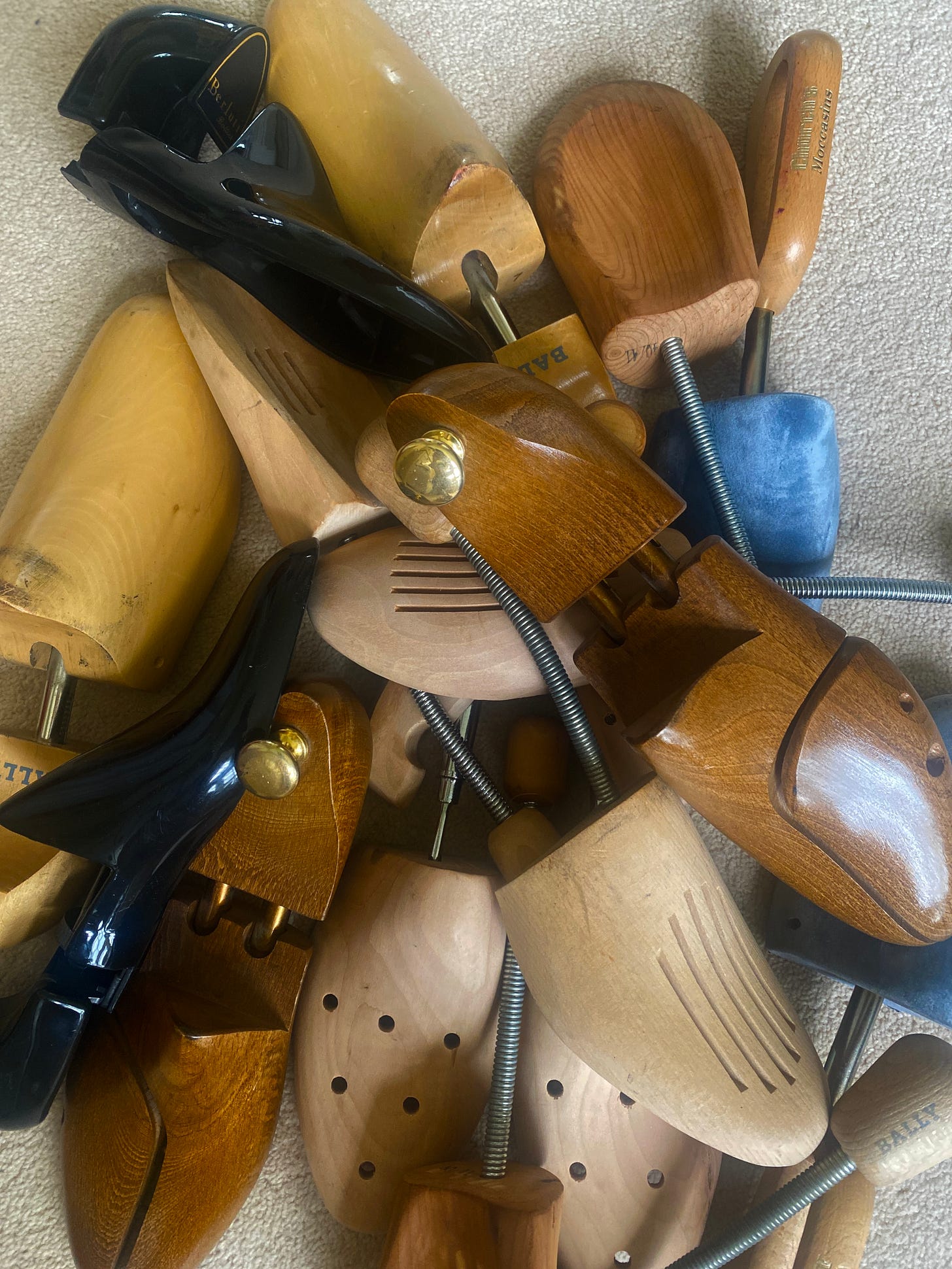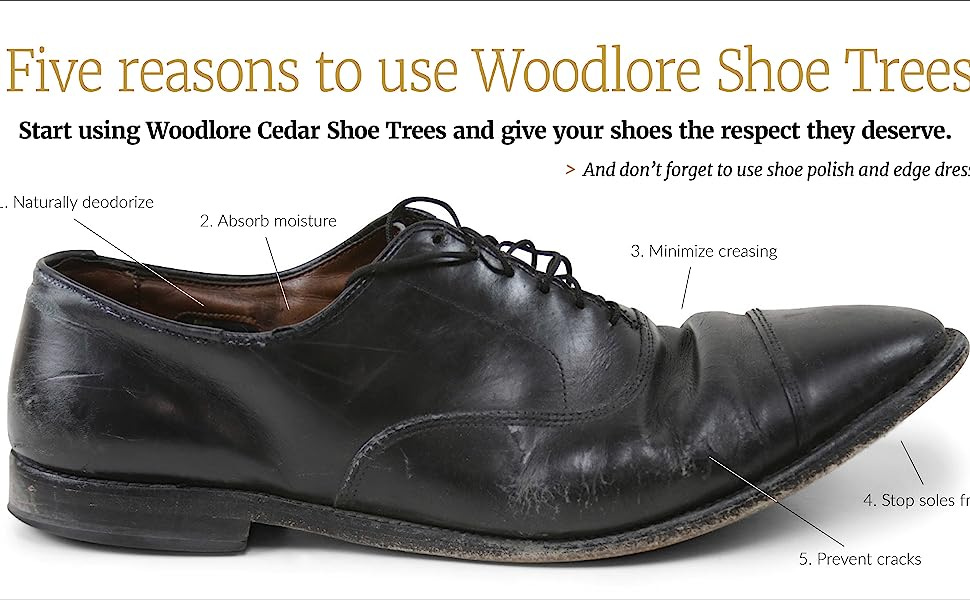I heard someone say once, spend good money on things that connect you to the ground.
Tyres, Beds, Shoes. This is some profound life advice.
Naturally, if we spend money on the things we buy there should be a duty of Care for those items. I believe the way we treat our possessions reflects our attitude towards them.
This is much like how we perceive people. We buy gifts for the people who mean the most to us. We offer our time to others who need it. Why? Because our attitudes towards them are of respect and significance.
Why are our possessions any different? This is where shoe trees come in, literally.
*My Emotional Shoe Tree Journey*
I used to walk into my Dads shoe room (not even a joke) and admire his shoes that he has collected over his life. When I would pick up a pair, he would have these springy, wooden contraptions coming out of all of his shoes. I would ask;
Young Spencer : ‘WhAt are tHoSe?!’,
Spencer’s Dad : ‘Oh they’re shoe trees, they keep the shoes in shape, looking good for many years.’
At first I thought this was some cobbler folklore BS. However, when he told me how old some of his shoes were, some were connecting him to the ground since the 1970s.
They were PRISTINE.

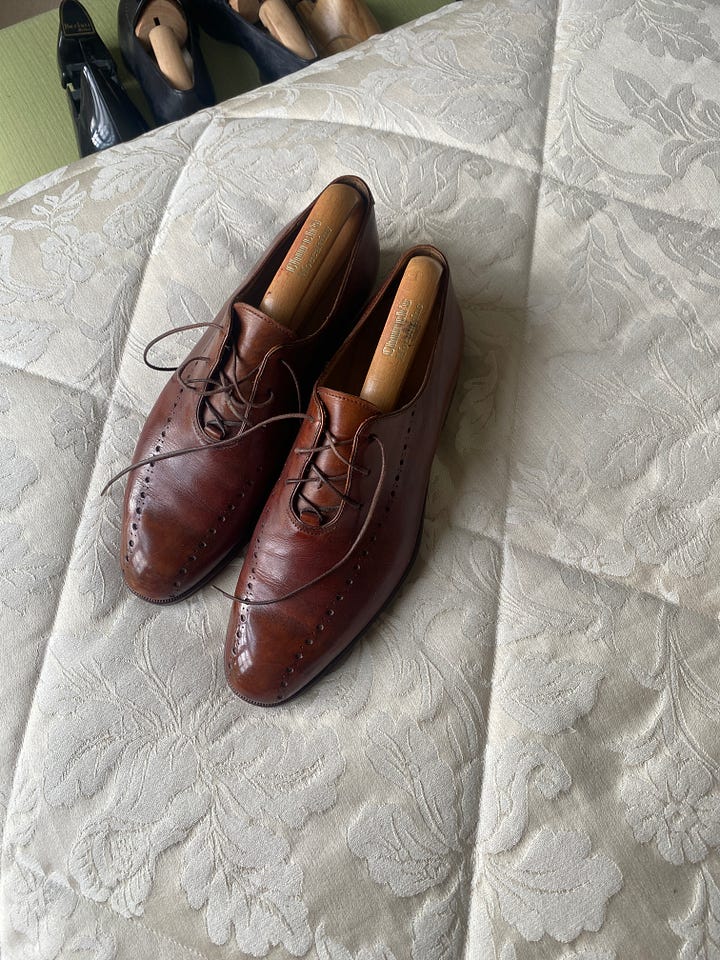
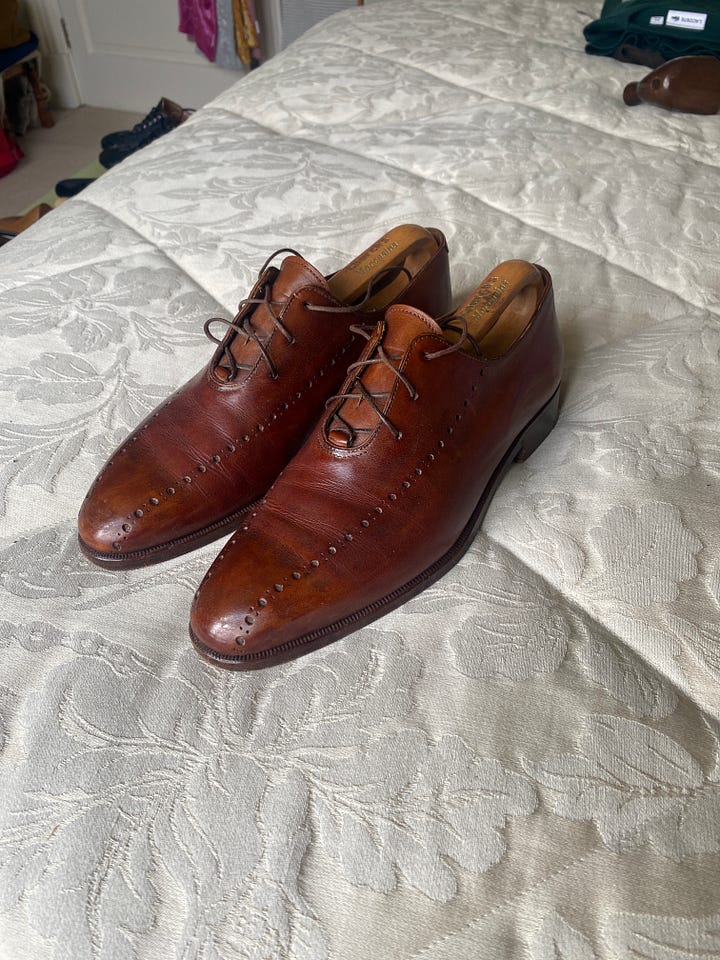
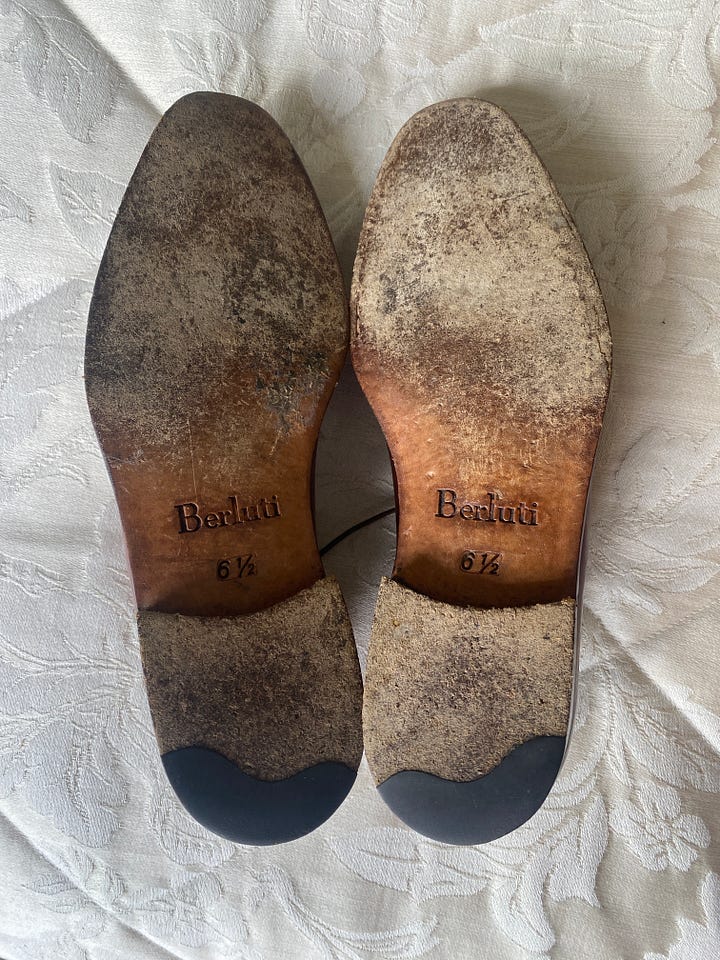
Being the disgruntled adolescent that I was at the time, I did not want to believe the trees were of any use at all. However, it was only until I started spending money on FootJoy golf shoes that I decided to try this mythological shoe tree.
Lo and behold, they worked a treat. No crease, no cracks, no odour. I soon had the most crease-free golf shoes you could find in any clubhouse in Ireland.
Now, I have shoe trees in every pair. For anyone who knows me, they’ll confirm this. If I travel, they must come with me. After a night out, they must be in the (planned) accommodation for that night. Wherever my shoes are, the trees are never too far away.
The Penny had dropped. The simple wardrobe tip from my father became a sobering sartorial moment. The shoes that I spent money on and longed for, needed to be nourished and Cared for. If we buy something that we desire, the absolute bare minimum is to attempt to extend these things over the course of our lives. I had realised, the goal isn’t the acquisition of the things themselves. That’s the easy part. It’s how we grow and mature with them.
To go deeper;
*Shoe-Tree Separation Anxiety*
I bought a pair of Paraboot’s in London a few years back. These shoes were my ultimate *Sutorial* grail of sorts. I wanted a pair for a very long time and I finally marched into Son Of A Stag in Hackney and emptied my Revolut Vault on these beautiful French shoes. Of course, I needed to wear them out that night. But I didn’t pack trees for shoes I hadn’t even bought yet. That would’ve been a step too far…
However, at the end of the night, I didn’t have my trusty trees with me and I knew I was in trouble. Long story short, my Paraboot’s received a crease in them after one wear due to no trees implanted. The jury’s out on whether the shoe tree would have made a difference on wear no.1. However, I wanted to start as I meant to go on with my new sutorial prize.
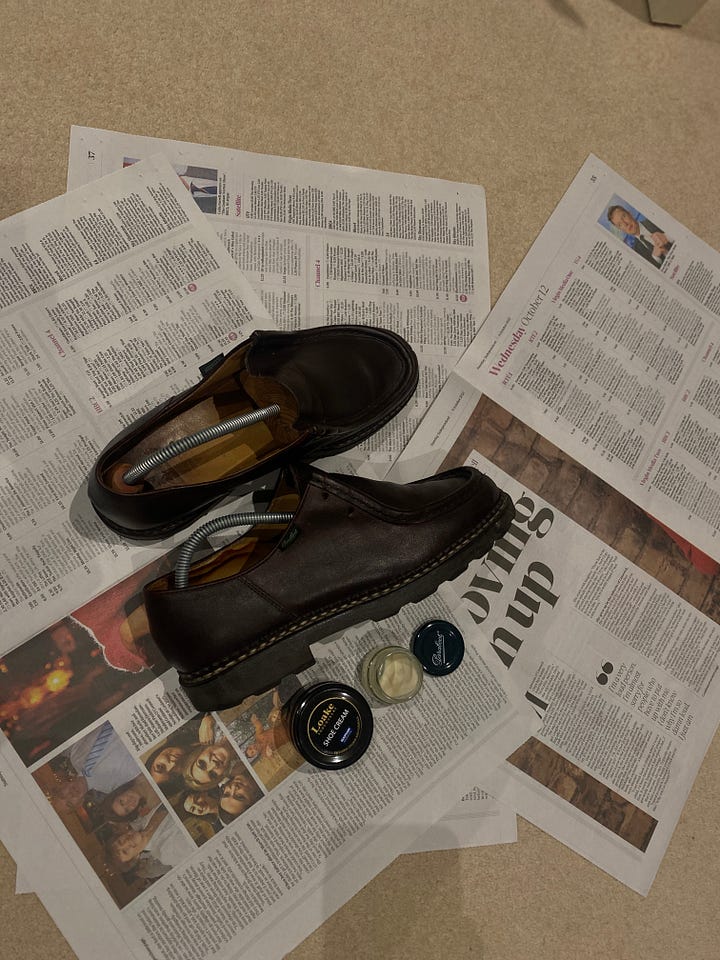
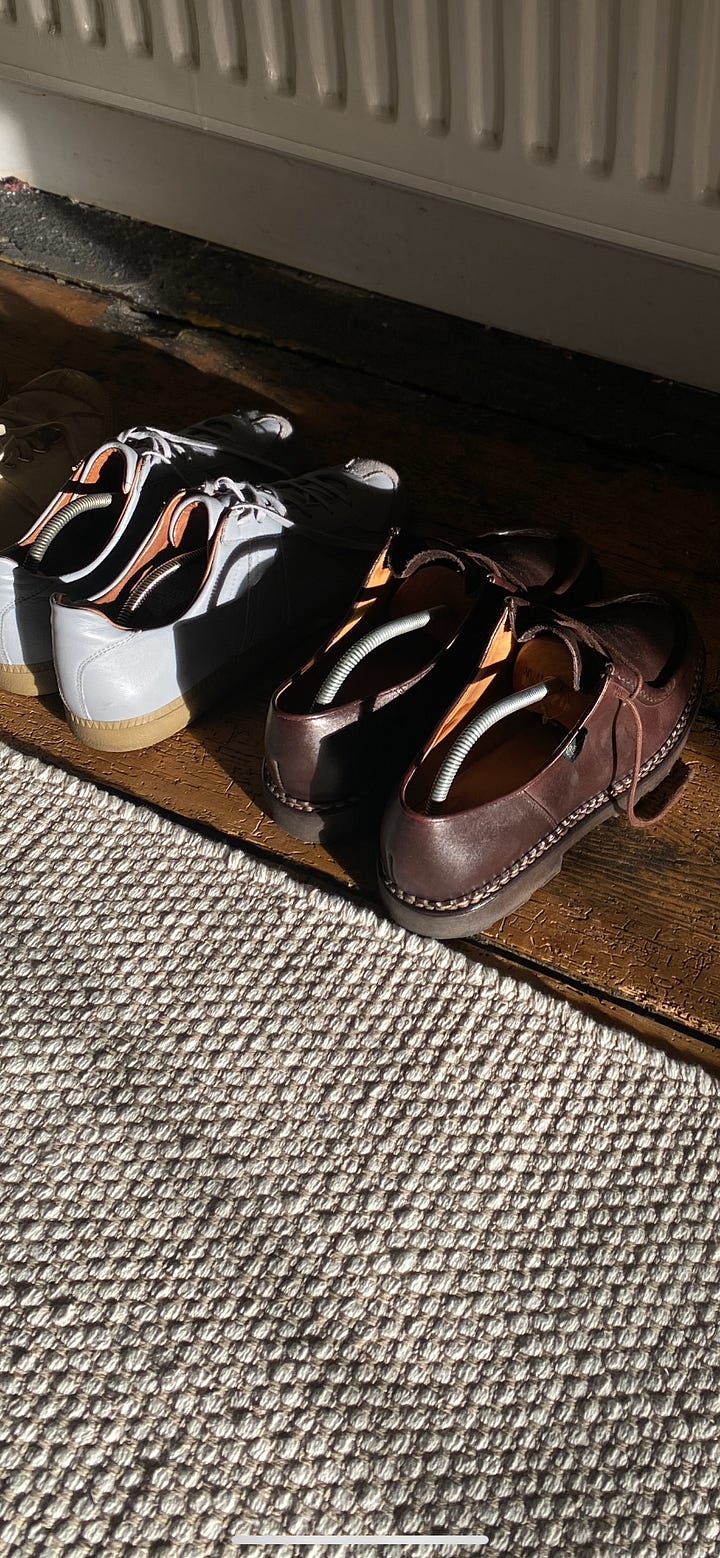
Now for a change of pace
If you are still here, you’re probably wondering;
You: ‘when is his crazy internal dialogue going to end?’
You’re now in luck. Below is an outline on how the trees work and the different types.
*How 👞🌲 Work*
In short, a pair of shoe trees will maintain and prolong the life of your most cherished ground connectors (shoes). Not only do they keep them in shape, they also absorb any moisture that will form after wearing them for any lengthy period of time. This is where shoe trees are especially key for leather and suede. Moisture will be wicked away by the wood, preventing bad odour and the dreaded shoe crinkle.
Shoe Tree Type 1: The Plastic one
The plastic shoes tree is relatively useless. However, if travelling they are light and easy to pack. Pick them up anywhere from Amazon to Tesco.
Shoe Tree Type 2: The Unvarnished one
The unvarnished shoe tree is the one you want. The untreated wood helps absorb the moisture from your shoes after a long day. These are particularly crucial for shoes that you wear on the regular. All the sweat needs to leave the shoes as soon as possible. This way, the shoes can keep their shape, looking fresh time after time.
Shoe Tree Type 3: The Varnished One
The Varnished one looks great. Super shiny, super elegant. Not only will they nourish your shoes after every wear, they also compliment the overall look of the shoes when they are not being worn.
These are recommended for your special pairs that are North of a couple hundred €£$. They will be the shoes you probably wear less frequently and kept for occasions. While they provide a certain amount of function, they don’t do the same job as the unvarnished cedar wood shoe tree.
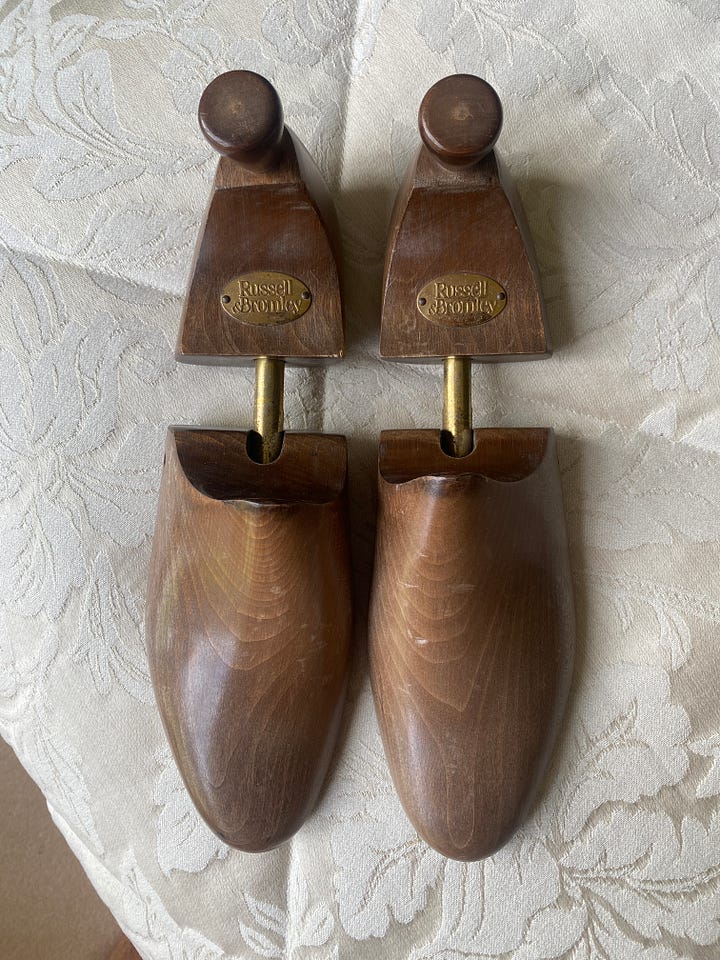
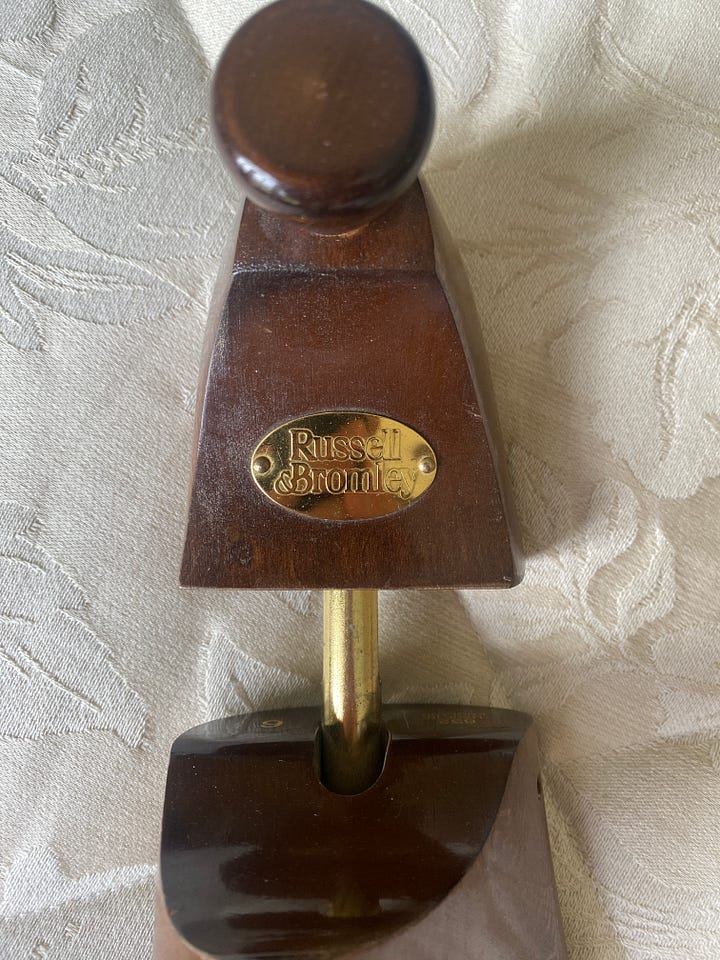
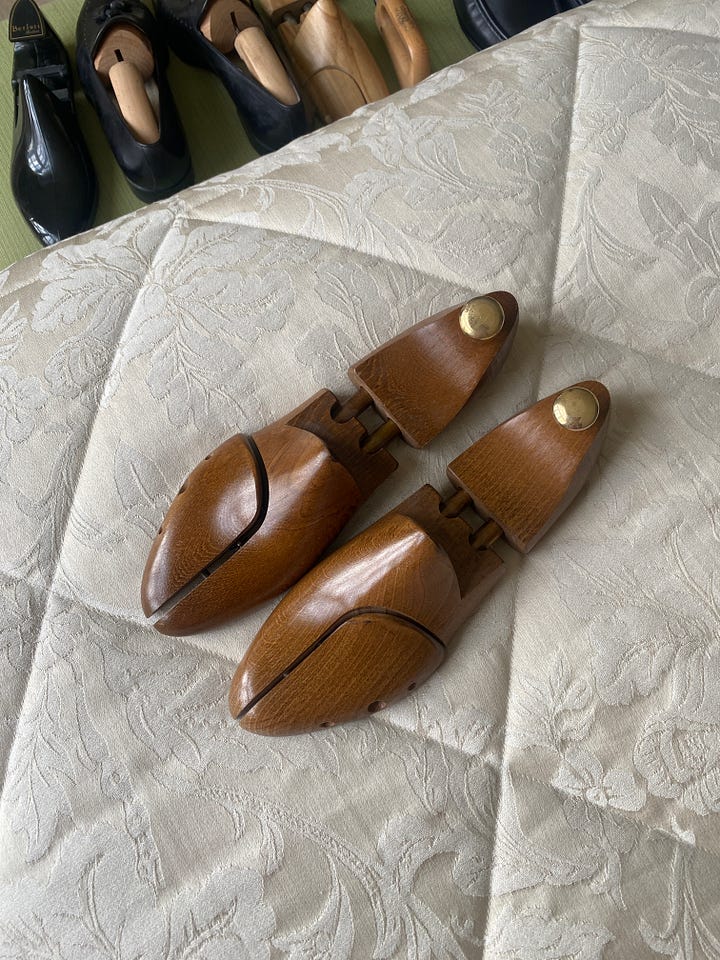
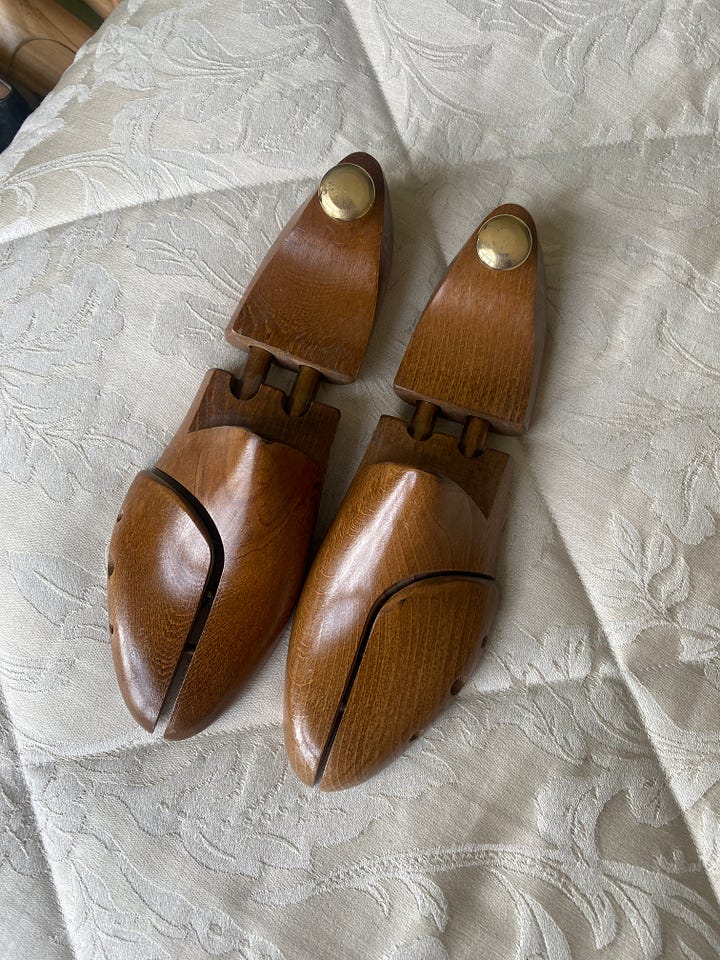
To Conclude Emotional Journey with Shoe Trees;
What was an innocuous journey into my Dads walk in wardrobe, became an important life metaphor for the prizes in our lives and how we Care for them. When I entered my Dads shoe room, it was the beautiful passing of the Shoe Caring torch from Father to Son. Not only has this reflected the simple importance of Caring for your shoes, it captures a wider message of investing time and effort into all of our life assets, be it sartorial, emotional or relational.
When starting this newsletter it was about gaining access to our best makers and shakers in town. However, it was also about highlighting the significance of the intersection between what we wear and how we live. Not only are the ‘things’ on our limbs a tangible item with fabric and buttons. They are an exterior portrayal of who we are and what we believe in.
When I reluctantly used the trees for my FootJoy golf shoes, I was skeptical. While they exceeded my expectations on the overall health of the shoes themselves, I was not expecting them to become an important life lesson. The age old phrase ‘What you put in is what you get out’ comes to mind.
If shoe trees are my unlikely symbol on how to perceive certain aspects of life,
what is yours?
Ponder on the question above over some coffee this Sunday Morning.
Any similar thoughts or experiences, please comment below.
Thank you
Care Label


